
Useful for software, technology companies and tech startups. Click the image to learn more about
However, outsourcing is often more affordable and provides enhanced off-hours support.. While we'll try to make it look as straightforward as possible, make no mistake that an IT org structure is highly complex. Each business has its own setup, which may omit certain roles, add other functions, use unique position titles, or group.
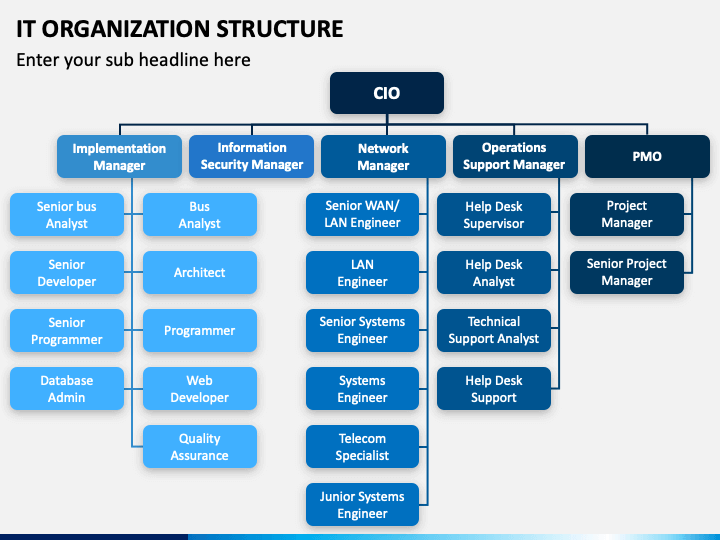
IT Organization Structure PowerPoint Template PPT Slides
"Organizations where IT is a cost center typically choose a silo model. Organizations where the distribution of the IT budget may shift often choose a system integration construct due to its flexibility." Read more: 5 Year Vision for Application Leaders. Hybrid organizational structures are the norm
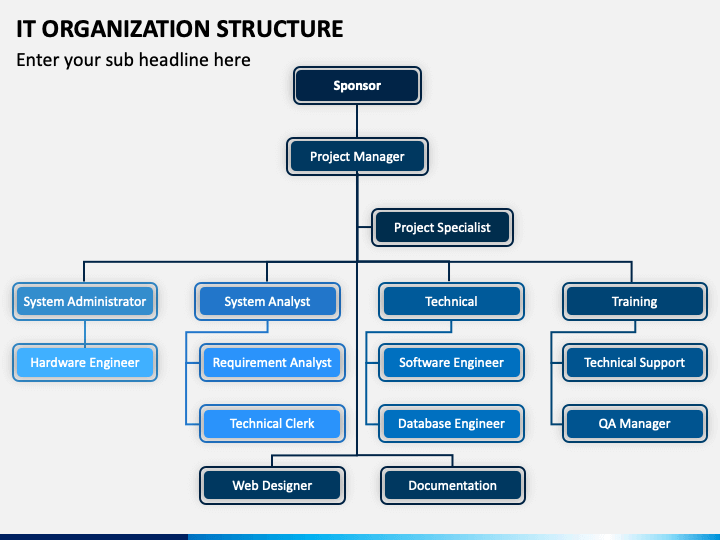
IT Organization Structure PowerPoint Template PPT Slides
IT Department Structure for Medium Businesses. In a medium-sized small business of 25-75 employees, it is very common to see someone on staff who has an IT title but also provides key support to the organization for delivery of services to their end customer.
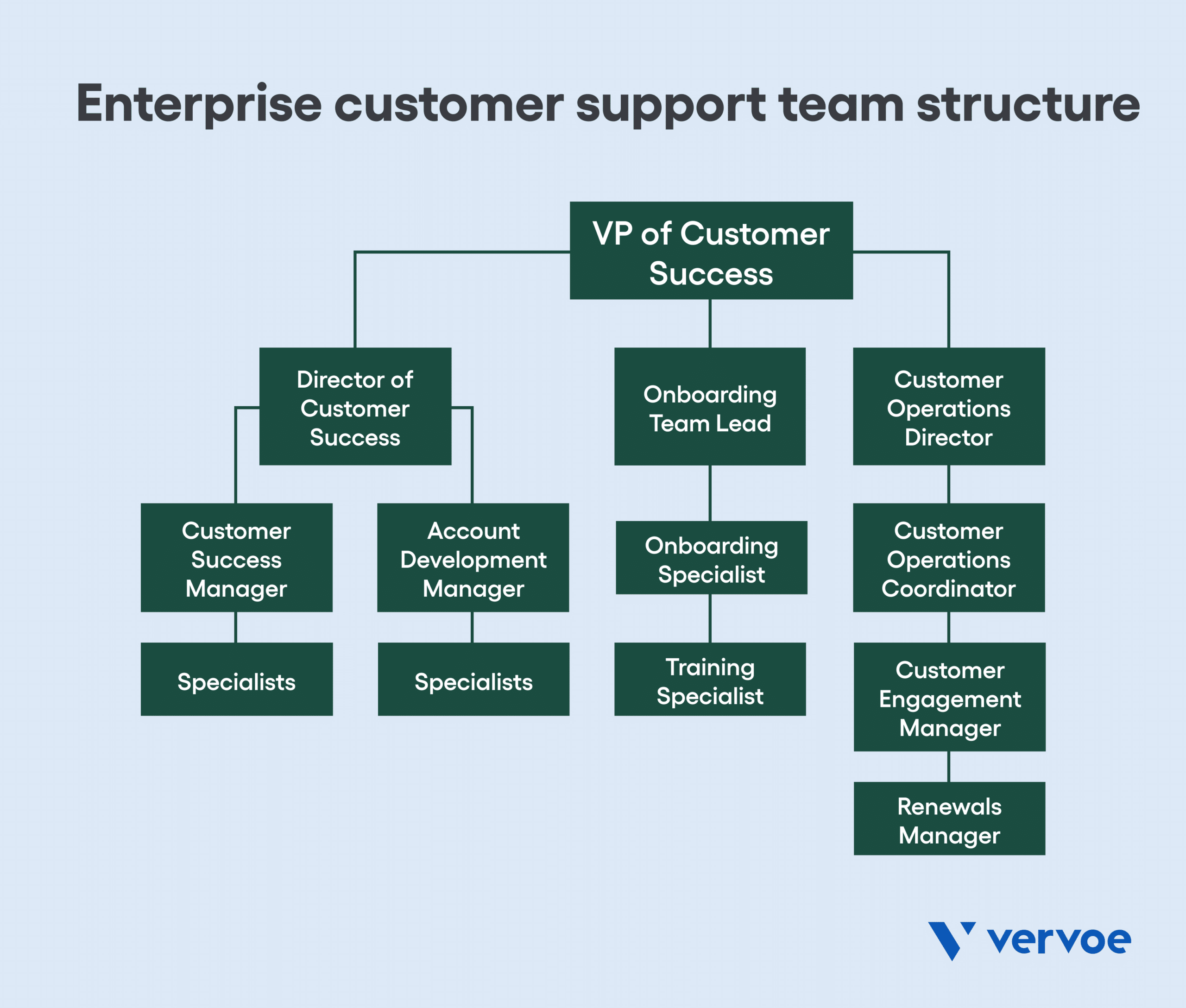
How To Build A Customer Support Team Structure Vervoe
During the process, you should be planning for future growth and choosing software solutions that support your goals. In this article, we'll help you understand the benefits of centralized and decentralized IT structures and determine the best structure for your organization. Centralized vs. decentralized IT organizational structures

HighPerformance IT Organizational Structure — Management and Teams
This summary contains input from fourteen members on global IT structures. We begin this summary by examining the organization of members' embedded, line of business IT teams, followed by the organization of members' centralized, enterprise-level IT. We then turn to the relationship between embedded and centralized IT, examining the balance of power and distribution of FTEs within members' IT.
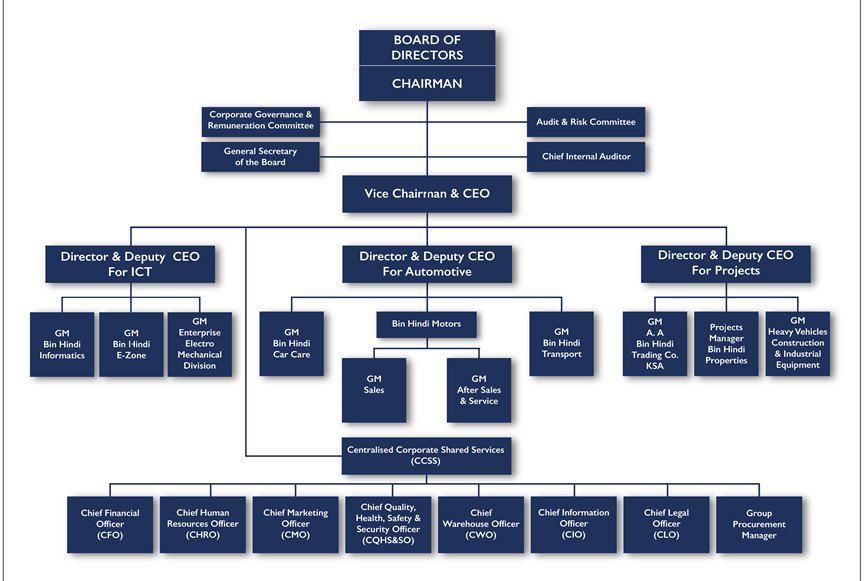
It Services It Services Organization Structure
The functional IT organizational structure is a traditional hierarchical structure where the IT department with its own management team leaders is divided into different functions such as networking, software development, infrastructure, and support.. What the technical support service is, the main support tiers, and the support structure.

7 Types of Organizational Structures for Companies Organizational chart, Organizational
2. Support. Similar to operations, a support team takes care of the services and systems within a company, typically computers and other equipment used within the business. These are permanent teams as they help keep business operations up and running and test, evaluate and fix any computer or network issues. 3. Processes

How To Find the Right Customer Support Team Structure for Your Business Zavvz
Successful agile organizations—of any size and across industries—take a similar approach to five key elements: strategy, structure, process, people, and technology. And while many companies successfully tackle the first four elements, they often still struggle with technology.

Redesign Your IT Organizational Structure InfoTech Research Group
Facebook is an example of a matrix organizational structure. The organization uses this structure, so that the function teams can interact more easily with the geographic and product teams. This provides the organization with a flexibility that allows it to quickly respond to market trends; a crucial advantage in the social media market.
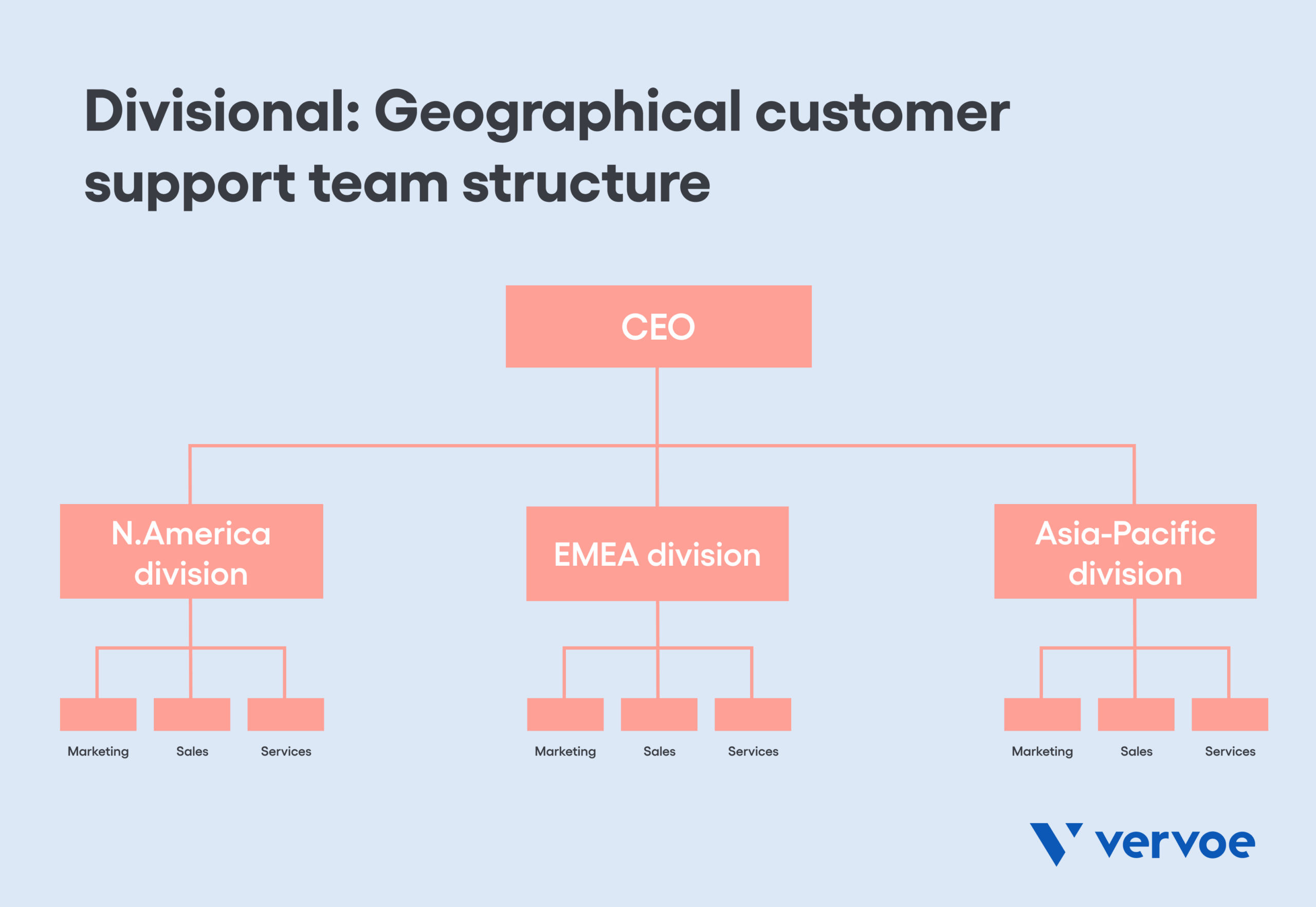
How To Build A Customer Support Team Structure Vervoe
The organizational structure is how the company delegates roles, responsibilities, job functions, accountability and decision-making authority.. What structure will best support your strategic.

it organizational structure, IT Example
Aligning your IT resources in the right structure is critical as: It ensures that the organization structure will support the delivery of the strategy. Resources can be easily developed or distributed to flex with changes in trends. It can eliminate gaps in service delivery to consistently meet or exceed stakeholder expectations.

Information Technology Services Organizational Chart Information Technology Services
Organizational structure is the foundation for a company's success. Here are the most common types of org structure, with examples, in 2022. The Whatfix Blog | Drive Digital Adoption. Imagine a customer support manager being asked to implement an exclusive package for a high-ticket customer. To get permission, they'd need to run the.

7 Types of Organizational Structures for Companies
Organizational structure helps to keep operations efficient by outlining specific roles and duties and optimizing the use of IT policies, systems and procedures.. Centralized structures feature one singular IT team that oversees all equipment, resources and technical support across an organization. Centralized teams benefit from greater.
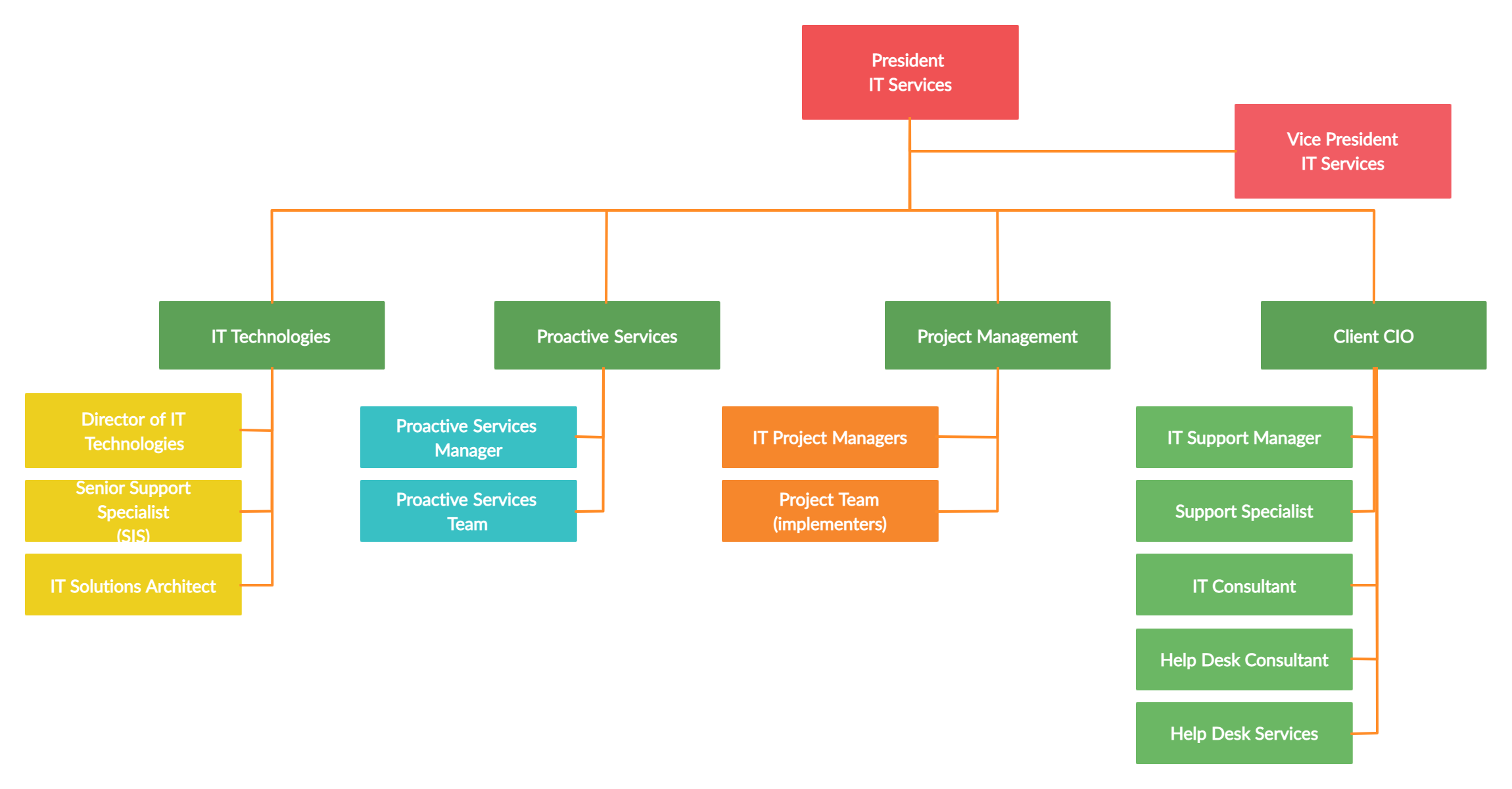
Organizational Chart Examples to Quickly Edit and Export in Many Formats
That organizing model is ill-equipped to support technology-driven transformation at the speed demanded by businesses,. This is the IT model that rings familiar: A unit with its own internal management structure and budget, responsible for making sure there is proper access to skills and knowledge, even if it's outside the boundaries of.
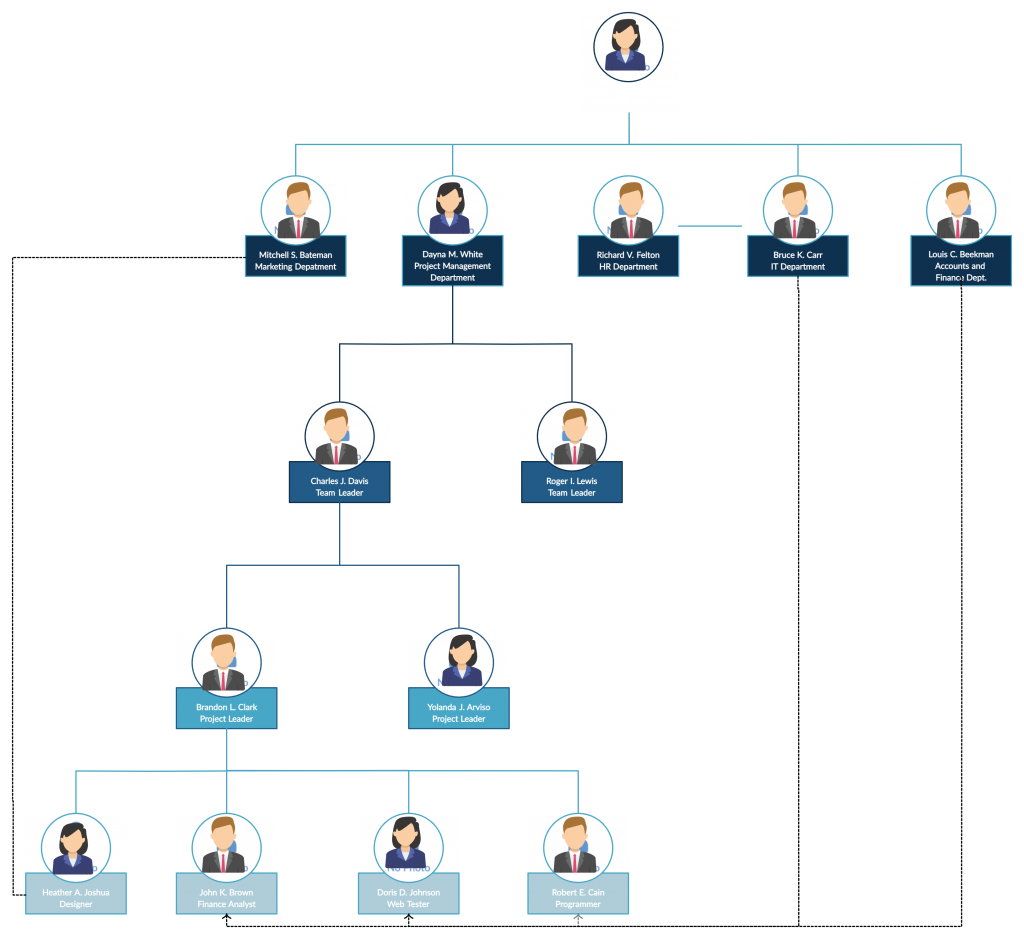
Four ways to structure an organization include line, and , matrix, and crossfunctional teams.
April 5, 2022 By Christian Lilley, Klaas Ole Kürtz, Henning Soller, and Christian Stüer. Since the early days of IT, the importance of the architecture function has been appreciated. It could be described as the art of making sure the many systems, products, and platforms within an organization work together seamlessly; critical concerns such as security, reliability, and operability are.

CIO Toolkit Next Gen IT Organization — Management and Teams
This structure caters to the scale and complexity of large organizations. Hybrid IT Structures. A hybrid IT structure blends elements of both centralized and decentralized models. It combines the efficiency and standardization of a centralized approach with the flexibility and specialization of a decentralized model.